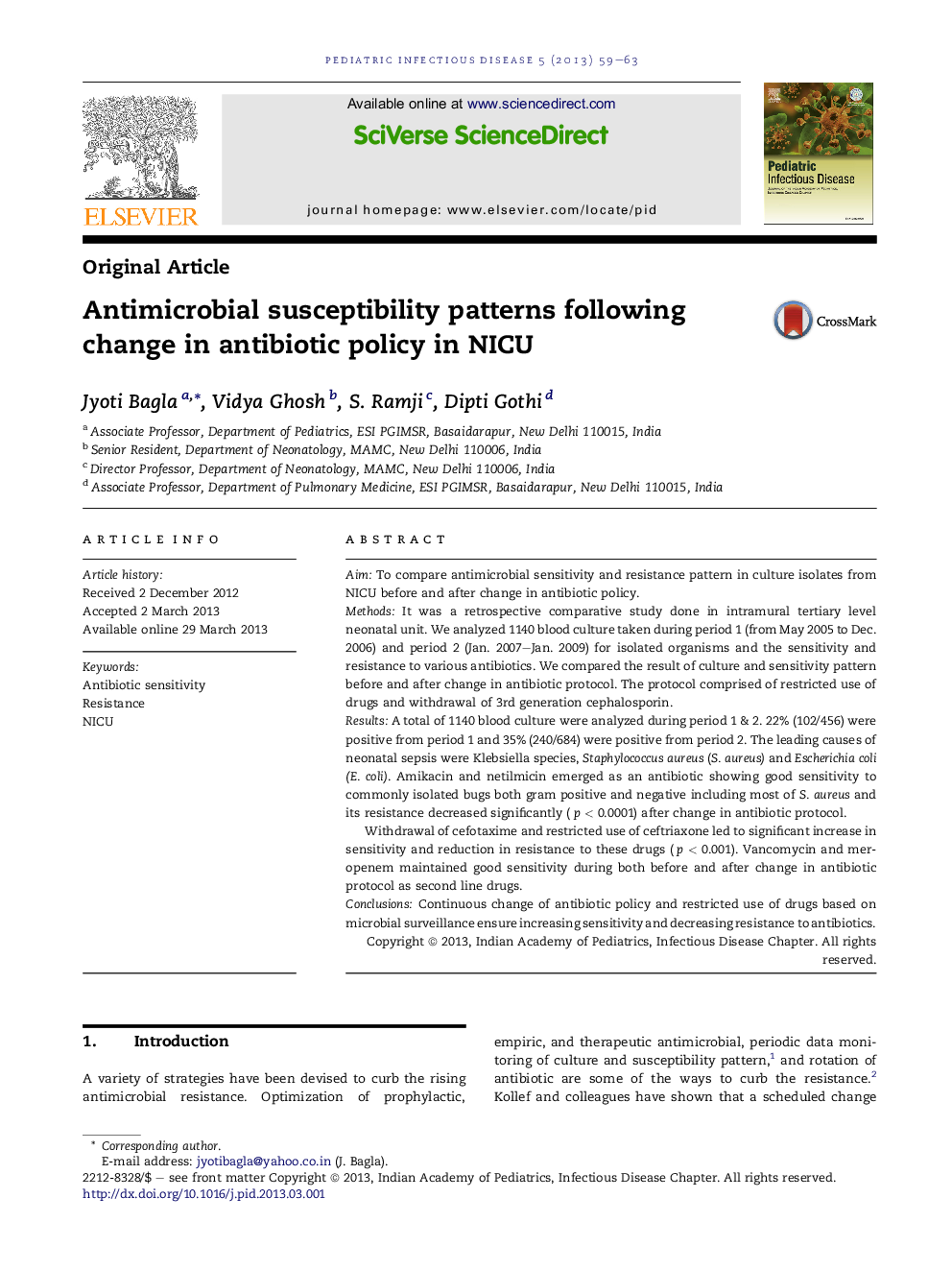| Article ID | Journal | Published Year | Pages | File Type |
|---|---|---|---|---|
| 3382487 | Pediatric Infectious Disease | 2013 | 5 Pages |
AimTo compare antimicrobial sensitivity and resistance pattern in culture isolates from NICU before and after change in antibiotic policy.MethodsIt was a retrospective comparative study done in intramural tertiary level neonatal unit. We analyzed 1140 blood culture taken during period 1 (from May 2005 to Dec. 2006) and period 2 (Jan. 2007–Jan. 2009) for isolated organisms and the sensitivity and resistance to various antibiotics. We compared the result of culture and sensitivity pattern before and after change in antibiotic protocol. The protocol comprised of restricted use of drugs and withdrawal of 3rd generation cephalosporin.ResultsA total of 1140 blood culture were analyzed during period 1 & 2. 22% (102/456) were positive from period 1 and 35% (240/684) were positive from period 2. The leading causes of neonatal sepsis were Klebsiella species, Staphylococcus aureus (S. aureus) and Escherichia coli (E. coli). Amikacin and netilmicin emerged as an antibiotic showing good sensitivity to commonly isolated bugs both gram positive and negative including most of S. aureus and its resistance decreased significantly (p < 0.0001) after change in antibiotic protocol.Withdrawal of cefotaxime and restricted use of ceftriaxone led to significant increase in sensitivity and reduction in resistance to these drugs (p < 0.001). Vancomycin and meropenem maintained good sensitivity during both before and after change in antibiotic protocol as second line drugs.ConclusionsContinuous change of antibiotic policy and restricted use of drugs based on microbial surveillance ensure increasing sensitivity and decreasing resistance to antibiotics.
